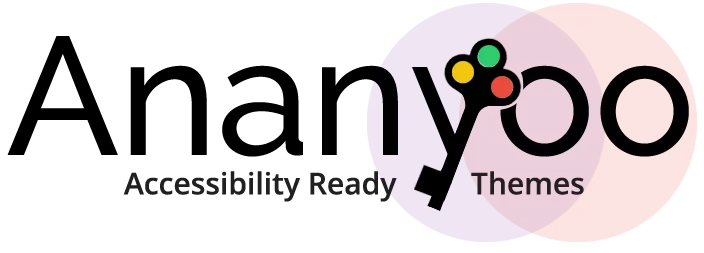
Accessibility fix
Building an accessible website suggests all users, including those with vision, hearing, mobility, or dexterity limitations, can work and understand your site. In this blog post, we’ll try to explain more about web accessibility and outline some of the chief components of creating an accessible website. By following those guidelines, website visitors with disabilities or limitations will be able to enjoy your content, products, and services.
Meet WCAG
WCAG is the acronym that stands for “Web Content Accessibility Guidelines.” These globally-recognized rules, created by the World Wide Web Consortium (W3C), were devised to assure that website users with physical disabilities, such as those who have hearing or visual impairment, can access web content in a similar way as those who don’t have these physical challenges.
A CMS that completely complies with the WCAG 2.0 standards must have the ability to create automatically accessible content. Once the setup is complete, a good CMS should have the capacity to control markup and design dynamic web pages without you having to delve too deep into the underlying code and content with an expert outlook. To meet international standards, a website audit must comply with the following four essential principles:
- Perception: website visitors must be able to browse information using at least one of their senses.
- Understanding: the information mentioned on the site must be recognizable to all.
- Operation: the web interface should be simple to use and not ask for impracticable actions for disabled visitors.
- Cross-platform: the way a website is displayed should be interpreted across several browsers, braille monitors and screen readers.
Below are Some Examples of How to Become Compliant With These Guidelines
Expanding Online Perception
Businesses should attempt to make both user interface components and the information provided friendly to as many people as possible. Audio is an excellent alternative to texts and can assist those who have vision issues. In the case of using a “CAPTCHA” online verification, a non-text option is essential for those who cannot see the test.
Changing Color and Contrast
In both audio and visual media, taking steps to separate the foreground content from its background elements can make comprehension and assimilation easier for website users. Dropping out background buzz or noise in audio content can aid users in hearing the main material more clearly. Sufficient contrast in text and visual media can support perception as well. The text sizes should be resizable to at least 200% by the user.
Alternatives for Time-Based Media
Alternatives to audio-only or video-only content should also be rendered for users with vision or hearing limitations. Captions or sign language choices serve as an option for those with hearing problems. Businesses should generally strive to create a content presentation that shouldn’t compromise quality, structure or information.
Layout of Web Pages
Web pages should be laid out in rational and expected ways, as should navigational mechanisms and other components be placed throughout a website. Depending on the user or by user request, the context changes must be able to be instated with a tool provided to them. For web pages claiming information input, the submissions must be reversible and correctable. Content must also be robust enough to be explained by a range of users, including those using assistive technology.
User Controls
To make the web page accessible, the audio or video longer than 3 seconds must have controllable elements for the user so that they can start, pause, and stop the media as and when needed to understand it fully. Volume control is also a vital component that should be provided. A mechanism for recognizing abbreviations and other specific definitions of important text or jargon used online must be made available to those without easy access to such information.
Compatibility with Assistive Technology
Assistive Technologies are used to cater to the requirements of people with different impairments like hearing, visual, mobility, and learning impairment. An assistive technology supports differently-abled people in interpreting or viewing a webpage.
Compatibility with these technologies must be addressed in website construction and upkeep in an ongoing way. Developers must create websites in a way which will allow them to be compatible with the most significant number of assistive technologies possible. These comprise but are not limited to visual reading assistants such as screen readers, screen magnifiers and others that are used by persons who are blind so that they can easily read the textual information through Braille or synthesized speech. It should also have speech recognition software, text-to-speech software, alternative keyboards (like the ones with head pointers, single switches, sip/puff usage and other special input mechanisms), and alternative pointing devices (which is different from a mouse or touch screen).
It is worth remarking that the WCAG is intended to provide general guidance on achieving web accessibility. The guidelines themselves recognize that real-world implementation strategies will vary according to the instances. The WCAG working group presents guidance documents such as adequate techniques known to meet the success criteria and be accessibility supported and known failures that are procedures which are identified to fail success criteria.
WCAG 2 Levels
The WCAG 2 success criteria are split up into three levels:
- Level A – This one defines the lowest or minimum level of accessibility of the website. Many users with physical limitations will find it very tough or even impossible to obtain information in the document. Satisfying these success criteria is the least set of requirements.
- Level AA – This level defines a raised level of accessibility. One or more groups of users will find it challenging to access information in the document even with these guidelines in place. Fulfilling these success criteria will eliminate essential barriers to accessing web content and information.
- Level AAA – Understandably, this is the highest level of success criteria. Satisfying these criteria will improve the user experience for people with disabilities. Not all Level AAA success criteria can be addressed for all types of documents or content.
Web Accessibility Standards generally include the WCAG 2.0 Level A and AA success criteria and conformance claims with some progress toward adoption of WCAG 2.1 in specific regions by the passage of WCAG 2.1 into the European Standards EN301-549.
Final Thoughts
WCAG 2.0 is so relevant as it allows users from a much more full range of ability levels to access the rich, vibrant and ever-evolving content landscape. While some users will not have the scope to access all the types of media online due to their specific cognitive and physical limitations, compliance with WCAG 2.0 allows for other alternatives, which are now widely accepted as replacement and accessibility devices.
Content should preferably be designed to help maximize and support accessibility for the most number of web users. Users have varied needs, and it would be prudent not to recreate their Internet presence from the ground up to be compliant across a range of web browsers and operating systems.
Contact our Ananyoo team to determine lots of things on WCAG and ADA Compliance for websites and how it can impact the revenue of your business. We are ready to create a site following these standards. We also offer you a report, which includes the performance details.
